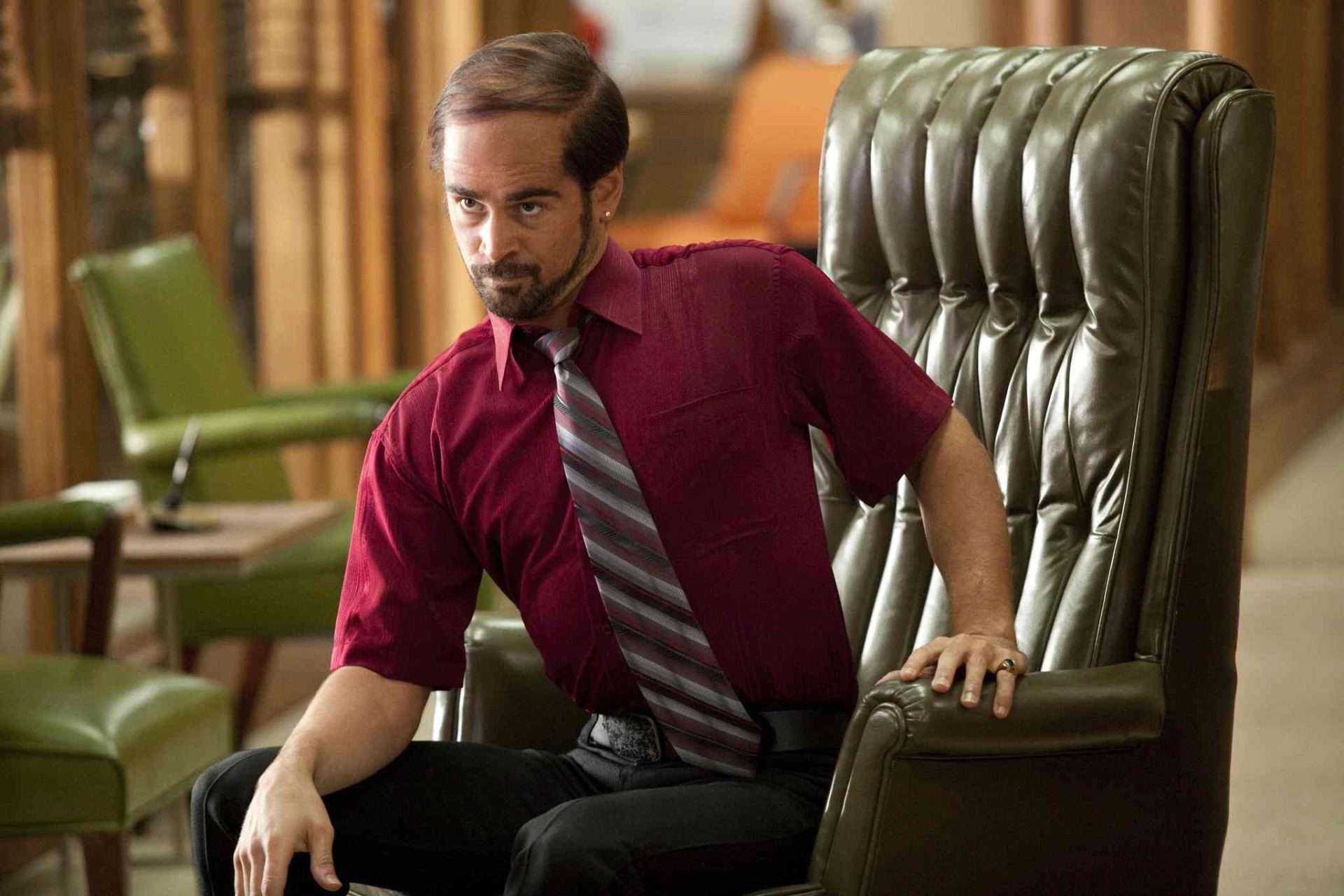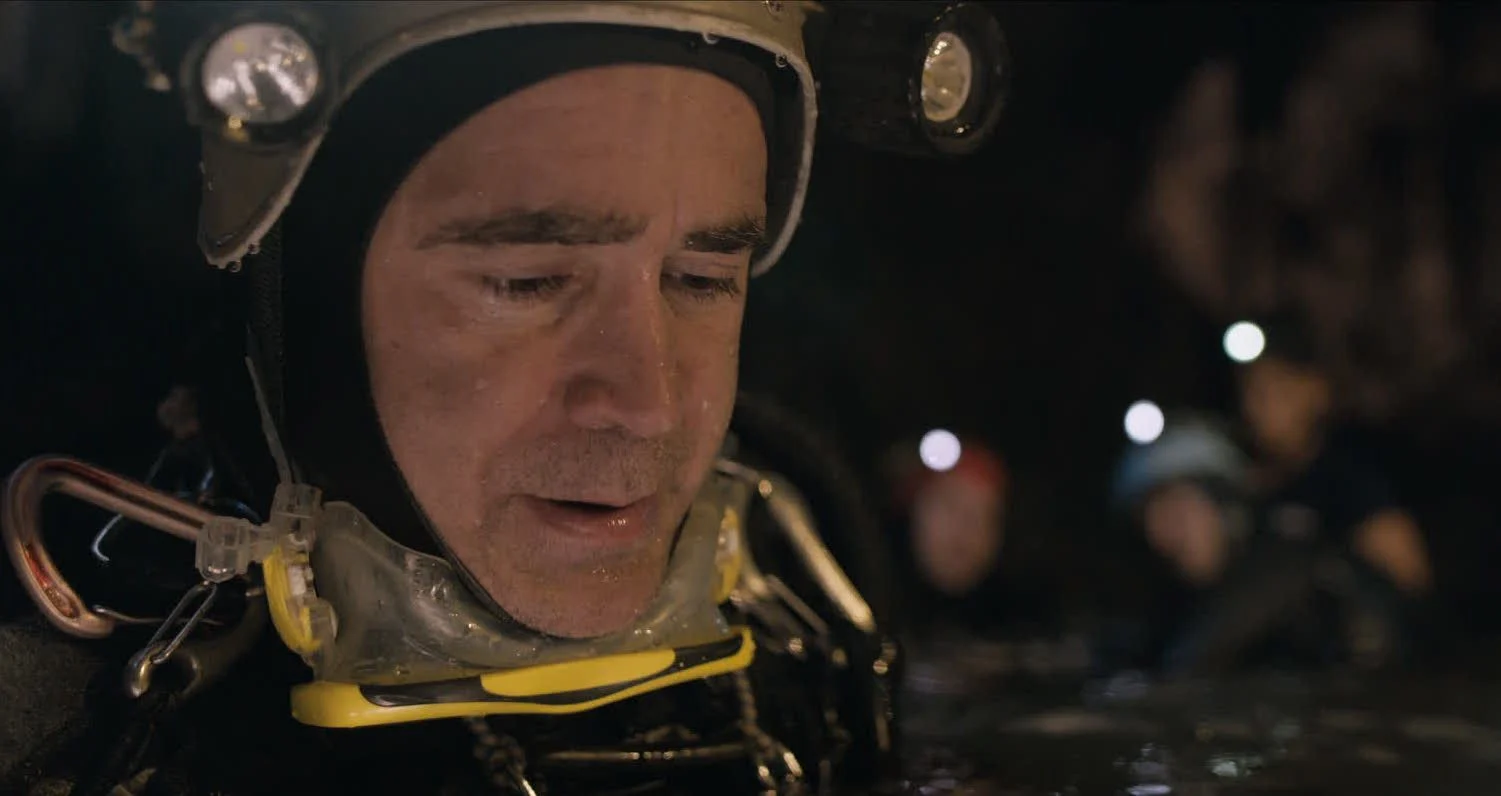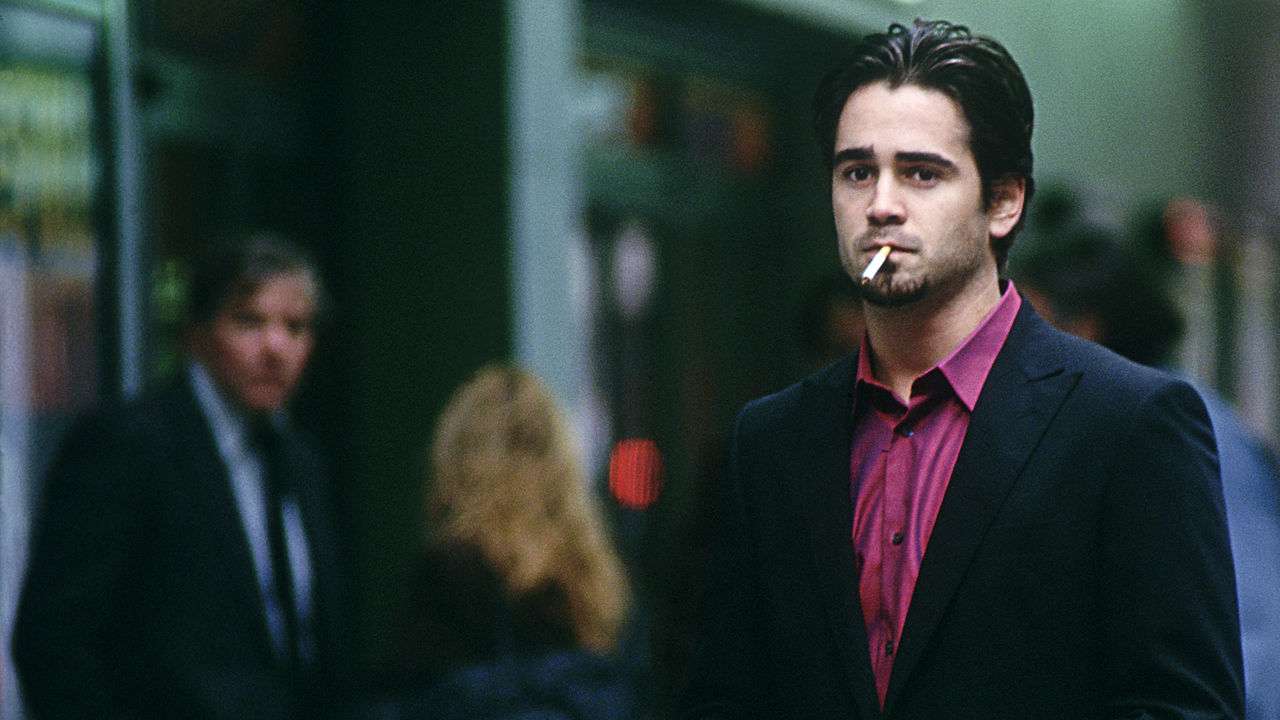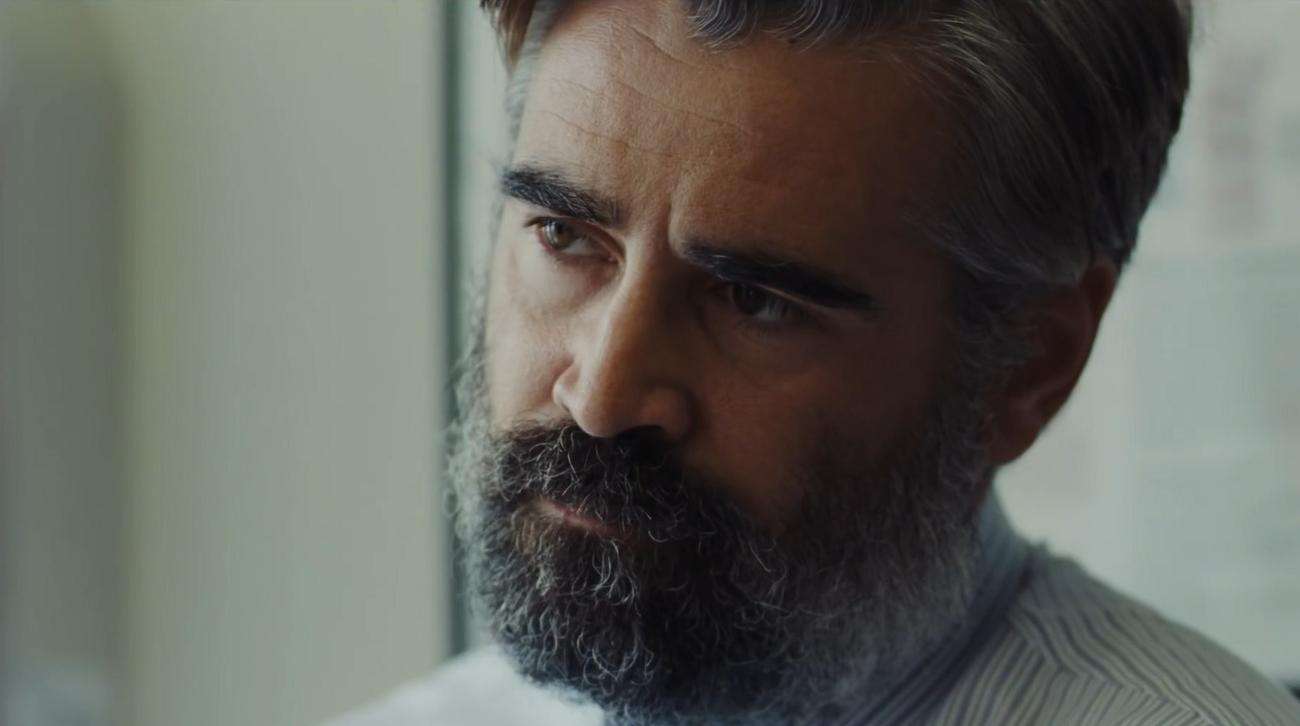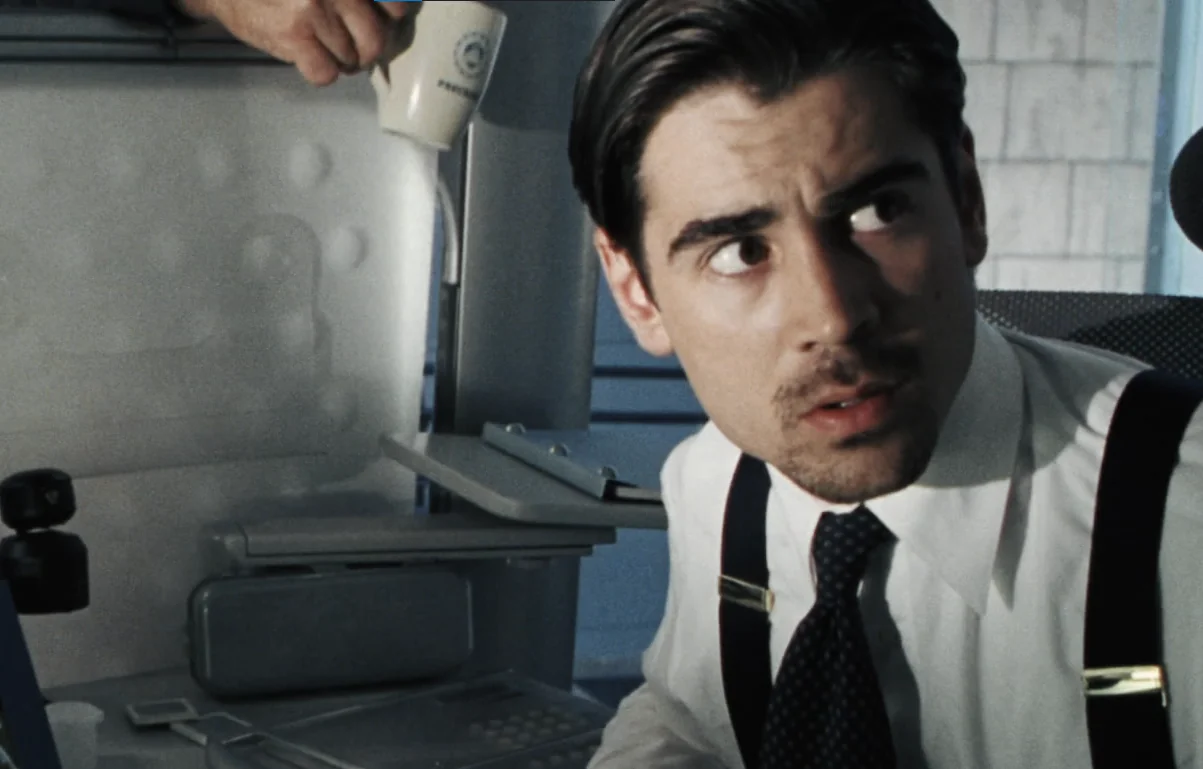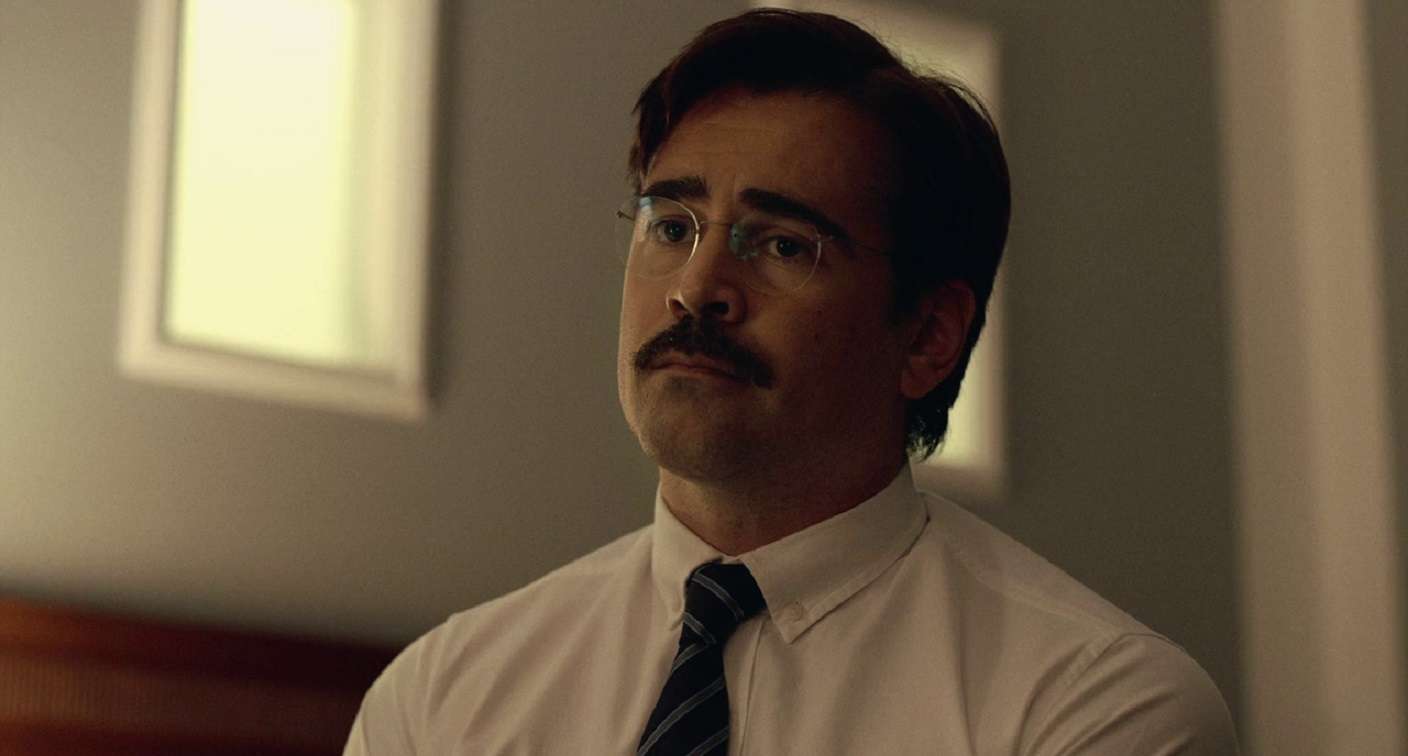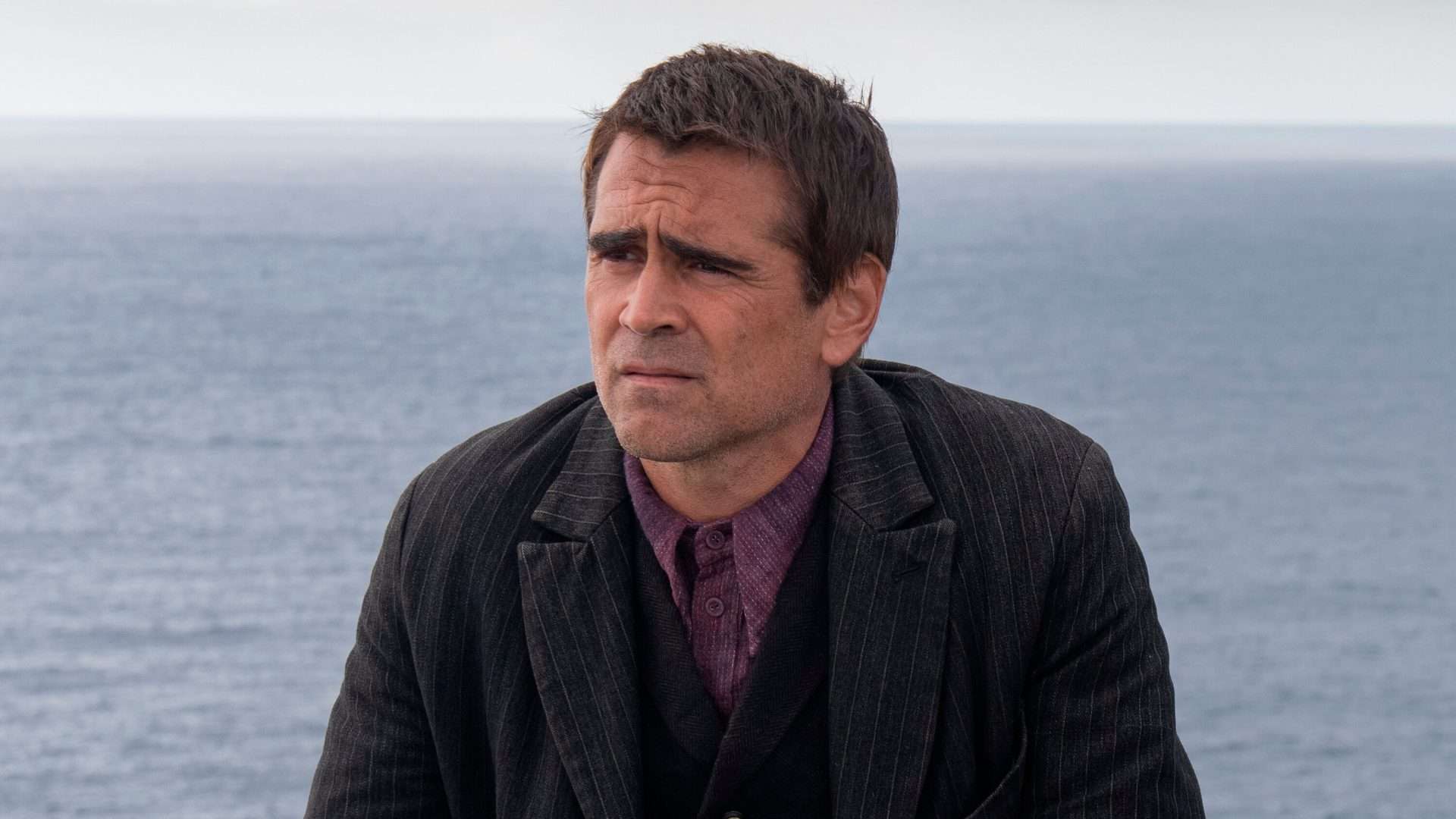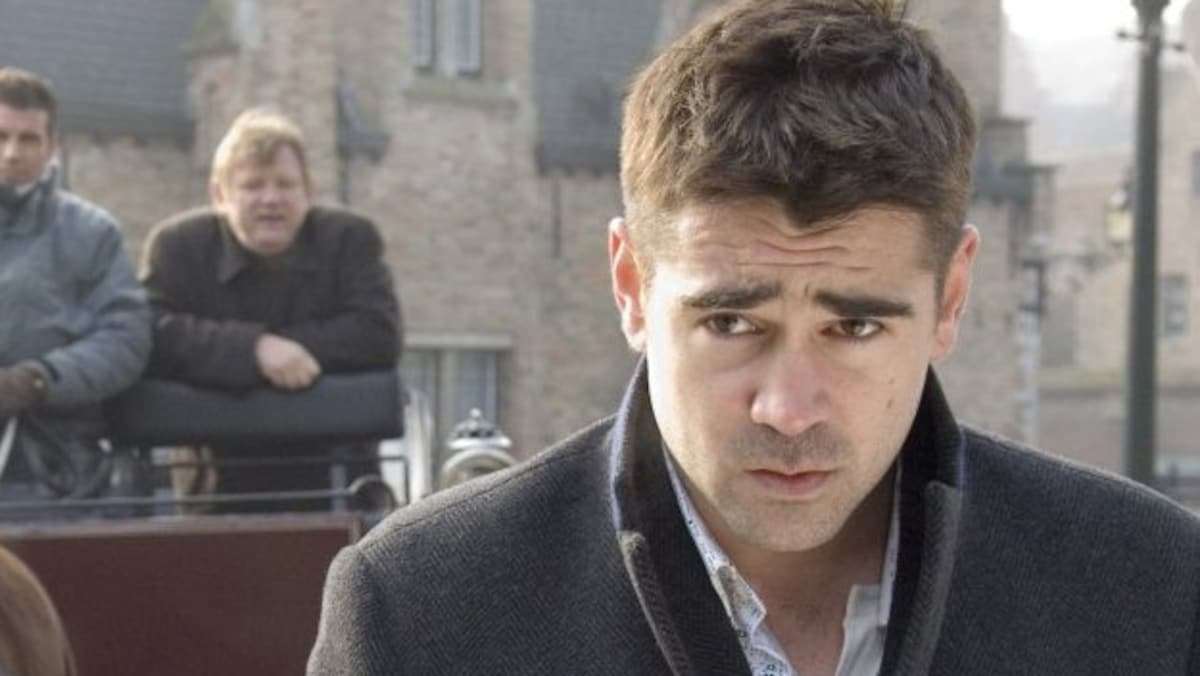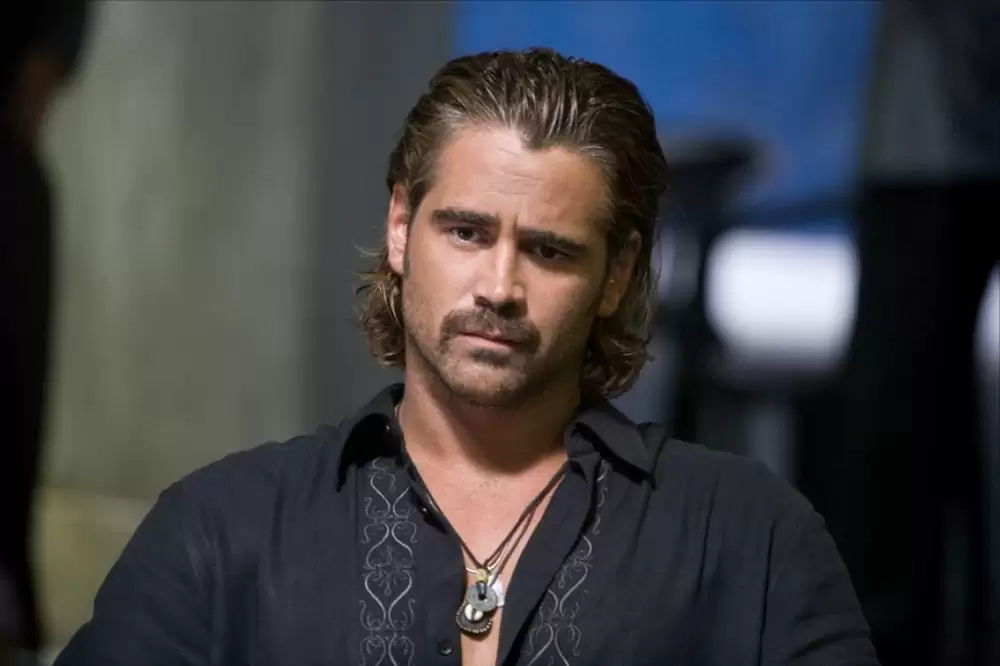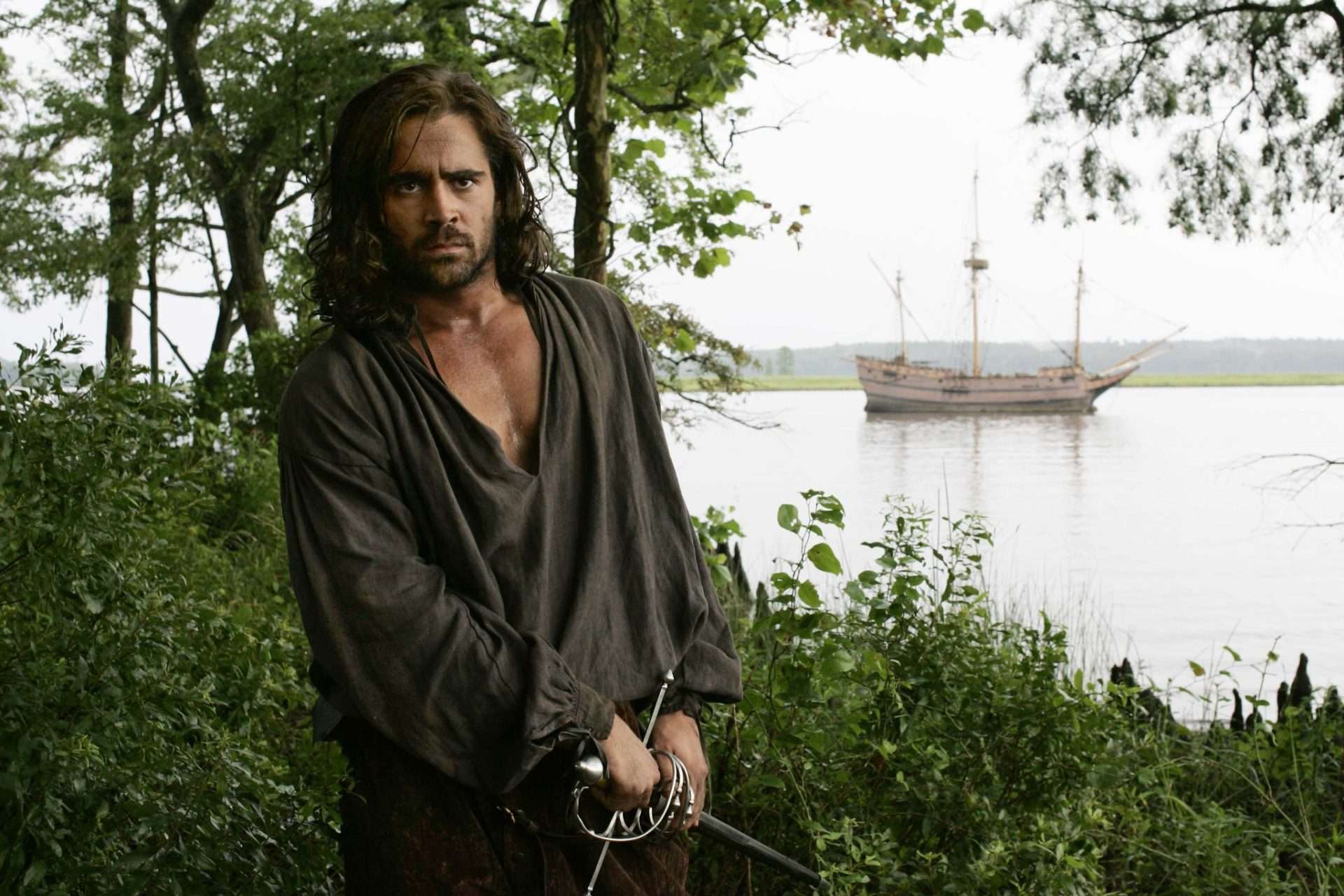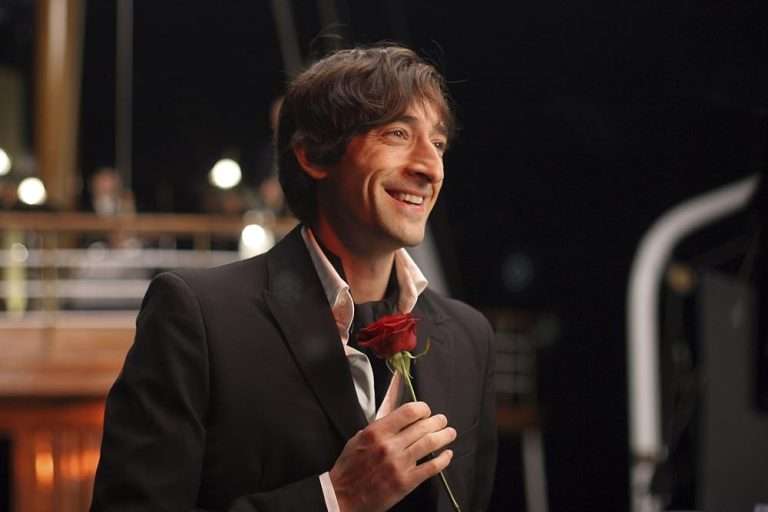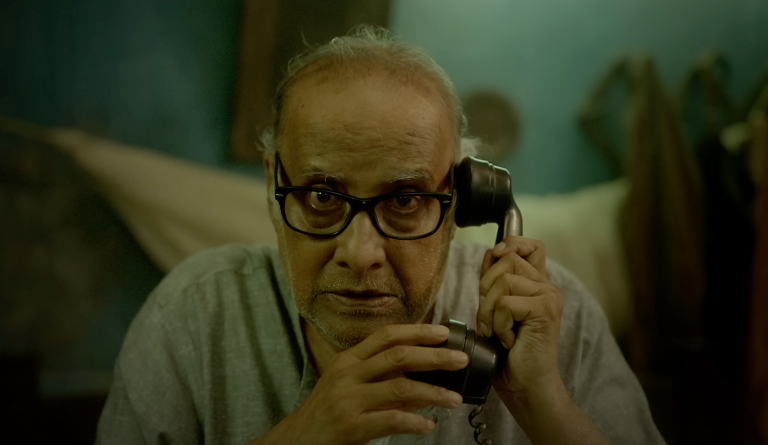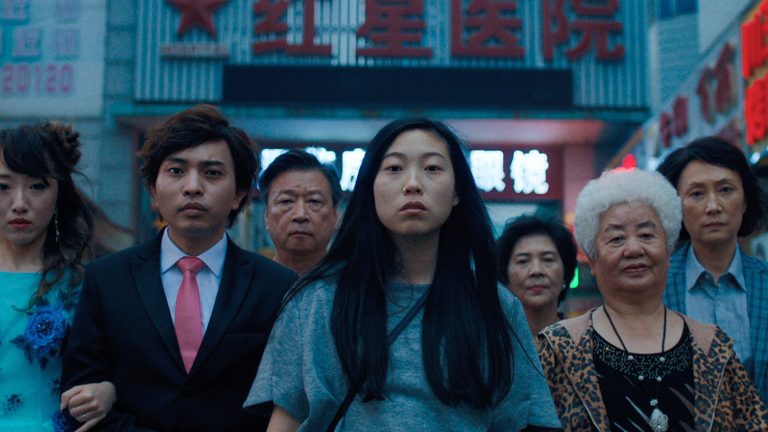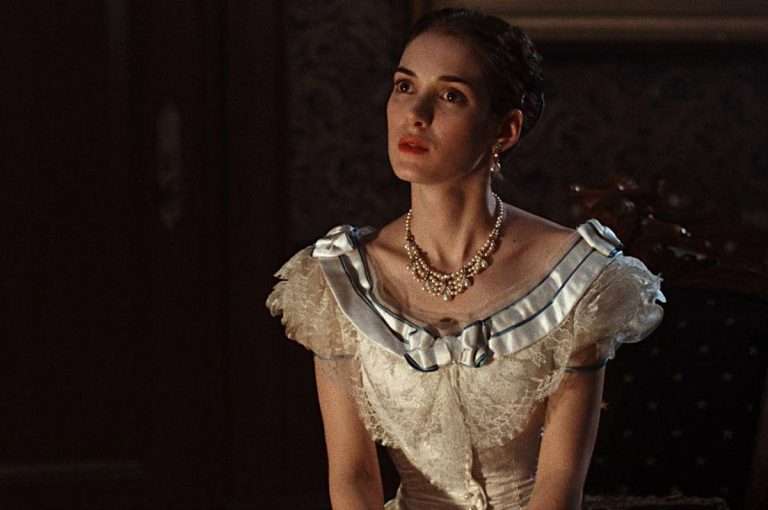From a charmingly flawed hitman struggling with morality in In Bruges to the devious ‘Penguin’ draped in hefty prosthetic makeup, working to foil Batman’s plans – Colin Farrell’s career showcases not only the wide range in his acting performances but also the variety of projects he chooses and the filmmakers he works with.
The Irish actor started acting in 1998 for the BBC drama series, Ballykissangel, shortly before making his film debut in 1999 with The War Zone (1999) and taking on his first lead film role in Tigerland (2000). Only a couple of years later, Steven Spielberg offered Farrell his first blockbuster breakthrough in Minority Report (2002) – the start of what would become the career of one of the finest modern Hollywood actors.
Having brought to life the expressive images of Michael Mann, exhibited the intimate humanity of Terrence Malick, and delivered the writerly lines of Martin McDonagh, Farrell has displayed his diverse abilities several times. But moreover, these performances show that he’s an actor who understands what cinema can be and commits entirely to fulfilling that potential.
This article explores the most superior segment of Colin Farrell’s acting journey, discussing the nuances of his roles as well as his collaboration with different directors. Here are Colin Farrell’s top ten performances:
10. Horrible Bosses (2011)
Seth Gordon is no stranger to vulgar comedies, and Horrible Bosses is another addition to his filmography that fits this genre. Reasonably criticized by many for being unappealingly obscene, the film isn’t recalled often. However, Farrell’s performance as the brash Bobby Pellitt has all the memorable aspects that one would desire from such a role.
From his distracting combover to his crude American accent, it’s a character strikingly different from anything else Farrell played before, but experimenting is nothing new for the actor. As expected, Farrell is almost unrecognizable in his role, which is something he would go on to top as Penguin in Batman. Many have already compared his performance with Tom Cruise’s Les Grossman in Tropic Thunder, both being intensely foul-mouthed characters that stand out in their casts despite playing a relatively minor role.
This particular style of humor is only one of the many that Farrell has showcased in his career. Though we usually associate him more with the dark comedy of In Bruges or the deadpan satire of The Lobster, Farrell shows us that he could be just as successful playing The Wolf of Wall Street-esque role, which is another testament to his remarkable range.
9. Thirteen Lives (2022)
Ron Howard’s 2022 true-story film, Thirteen Lives, was exclusively released on Amazon Prime, so it went under the radar for many cinemagoers. Though it’s not among the best works of the decade so far, the film does lend itself well to broader appeal due to its suspense and unswerving approach to storytelling.
Colin Farrell, Viggo Mortensen, and Joel Edgerton lead the cast with exceptionally modest performances. Farrell’s character is an IT Consultant who leaves his family to embark on the deadly mission of rescuing a Thai football team from a flooded cave. This role clearly requires a degree of emotional vulnerability. As expected, Farrell can effectively showcase apprehension, but his ability to balance his intimate process of acting and the script’s material is awe-inspiring.
Thirteen Lives is a procedural drama. This doesn’t necessarily equate to “realistic,” but implies that information is vital and the narrative is visualized with a somewhat blank seriousness. The film thrives on this tone because it keeps the audience involved. In order to successfully form his character, Farrell must keep this in mind. He must allow his character to stand out, but only a bit (the same goes for the rest of the cast), because theatricalities could impact the tone. And though we’ve seen him do it better in his other works, Farrell still manages to internalize turmoil effectively here.
8. Phone Booth (2002)
Joel Schumacher’s 2002 single-location thriller of a man in a phone booth being threatened by a sniper fits nicely into its era. The inane and pleasantly trashy aspects (including the premise itself) are familiar with early 2000s cinema. However, Phone Booth didn’t receive much praise when it was first released. As time went on, more directors moved away from this style of filmmaking, instead choosing to conform to an increasing number of conventionalities. But there is always something about this era of cinema that engages me, and Phone Booth embodies those characteristics well.
Colin Farrell plays a New York publicist with equal smugness and fear. The way he arches his eyebrows accentuates his character’s apprehension so nicely, and this is something we’ve seen him use in many other films, too (especially comedies). Farrell feels like a pulpier version of a character from The Departed, which may seem like a wrong comparison (given that Farrell uses a Bronx accent whilst those in The Departed speak in a Boston accent). Still, the taut grittiness reminds me of that. Overall, it’s another demonstration of Farrell’s astounding range as an actor.
7. The Killing of a Sacred Deer (2017)
Honestly, The Killing of a Sacred Deer never really clicked for me. Yorgos Lanthimos’ fixation on staging awkwardness is fascinating, but this entry in his filmography felt somewhat gimmicky in its execution. The narrative construction is less of an issue here; Lanthimos carefully designs his characters in the context of Greek allegory while placing everything on a steadily paced descent into madness. My problem is in the way Lanthimos presents his film. On the surface, his formal approach employs the tricks used by cinema’s greats but ultimately feels trite and self-satisfied. Where the likes of Stanley Kubrick would use tracking shots, dolly movements, and zooms to emulate authentic dreamscapes, Lanthimos’ visual language seems to scream for attention continually.
However, much of the film is elevated by the cast’s performances. Colin Farrell brings himself to Lanthimos’ wavelength effortlessly; he embodies a sterile absurdity that’s intensified to the same clinical degree as every other aspect of the film. It’s one of his first performances I watched, where I admired his reservation greatly. Though all the characters here are machinelike, Farrell allows his co-actors, namely Barry Keoghan, to equitably join him in the limelight of insanity.
6. Minority Report (2002)
As mentioned earlier, Minority Report marks Colin Farrell’s entrance into Hollywood’s blockbuster space. Working under a high-caliber director like Steven Spielberg is the dream of any newcomer, but making that collaboration memorable is no easy task, and neither is playing a role opposite a skilled actor like Tom Cruise. Farrell faces multiple challenges here, namely assisting Spielberg in realizing his vision while holding his own amongst a cast of talented individuals.
Spielberg’s showcase of the future is relatively plausible, but it doesn’t quite evoke the same level of childlike curiosity of his previous works (and understandably so, given the subject matter). As a result, his world is inventive yet dystopic, making Farrell’s slick FBI villain an appropriate addition. Like Mads Mikkelsen’s Le Chiffre in Casino Royale, Farrell’s Danny Witwer has the archetypal appearance of a movie villain but maintains a genuine motivation that highlights the narrative’s stakes. He is a driven professional trying to complete a task, a seemingly grounded aspect of an otherwise strange world, but this is the balance Farrell achieves (and one that Spielberg displays across much of his work), which helps to keep us engaged while allowing Spielberg to demonstrate his form.
Read More: 10 Best Action Sequences from the Mission Impossible Franchise
5. The Lobster (2015)
Much like The Killing of the Sacred Deer, The Lobster is another Lanthimos film focusing entirely on allegory. In addition to being a peculiar story of love and loss, it’s a dark satire on societal pressure and modern relationships, rendered in Lanthimos’ trademark awkward manner. The Lobster seems to function far better than The Killing of the Sacred Deer, partly because the absurd humor helps divert the film from becoming too self-serious and flashy. This also allows Colin Farrell to explore a large array of emotions within an ostensibly lifeless framework.
He plays David, a man who must find a partner or turn into the titular crustacean – a fittingly bizarre premise for the film’s bizarre world. One key aspect of Farrell’s role here is comedy: something he’s very familiar with given his previous works, namely In Bruges. However, that brand of humor was far more openly crass compared to Lanthimos’ calculatedly deadpan style. Still, Farrell achieves this with ease and imbues his character with much more. The actor initially described his role as “something of a blank canvas,” which is a suitable phrase for any character in a Lanthimos film. But Farrell takes this canvas and paints a haunting portrait of loneliness, a theme he considers to be central to the film.
4. The Banshees of Inisherin (2022)
Fourteen years after In Bruges, Martin McDonagh reunited with his lead duo, Colin Farrell and Brendan Gleeson, for a simple film in its premise yet complex in its subtext. The Banshees of Inisherin’s tale of a fractured friendship is intriguing on both a thematic and stylistic level, but its stage-like scenarios have put some people off. Although I understand the aversion towards this aspect, McDonagh’s comedic dismantling of bitterness and cynicism appealed to me greatly (unlike the other stage-like 2022 film, The Whale, which fails at tackling said cynicism and instead indulges in its mawkish misery).
Both Farrell and Gleeson deliver a couple of my favorite performances of 2022. Accompanied delightfully by Kerry Condon and Barry Keoghan, the lead duo bring to life a bond imbued with tones of humor and melancholy. Farrell’s Pádraic is an innocent, sincere man in emotional conflict with Gleeson’s seemingly snobbish Colm (his haughty nature is simply a mask for his despair), the first mover in the friendship’s dissolution.
Similar to the roles played in In Bruges and Miami Vice, Farrell forms his character with a sentimental, puppy-eyed endearment that catalyzes the film’s grief. What’s great about this project is the grounded yet histrionic style (at least in comparison to the aforementioned Lanthimos films and Thirteen Lives). Farrell doesn’t need to quieten his emotional range here, especially when his character reaches dramatic extremes. As a result, he exhibits some of the most tender, misty-eyed acting we’ve seen from him so far.
3. In Bruges (2008)
“Simultaneously profound, and beautifully comic, and wonderfully painful, filled with delightful remorse and more than anything else the sweetest, sweetest redemptive qualities. And that was In Bruges for me.” Colin Farrell said this as he accepted his Golden Globes award for In Bruges, and I wholeheartedly agree with his words. Martin McDonagh’s 2008 debut feature and masterwork is one of those films that thoroughly engaged and impressed me in every department. The film follows two hitmen, played by Farrell and Brendon Gleeson, as they clumsily make their way through Bruges – an ideal setting for a dark comedy, which can also easily collapse under the burden of tonal balance, but McDonagh naturally avoids this.
What’s most memorable about In Bruges is its script – a skilfully written work full of wit & comedy, guilt & poignancy, and even biblical themes of morality, purgatory, and redemption. However, it’s the cast that gives it the modern classic status. Farrell, Gleeson, and Ralph Fiennes are all exceptional here, but Farrell gives the film a sense of heart that’s key to its success. The awe-inspiring part of his performance is the comedy. Farrell seems to have a natural knack for comic timing and juvenile (almost cartoonish at times) expressions/voices. His facial contortions & sardonic deliveries are endlessly entertaining and perhaps the best of his career in this genre.
2. Miami Vice (2006)
Audiences often overlook great works of cinema, and that’s alright. It’s an aspect inherent to art itself – a genuine artist will avoid temptations to conform to popular notions of visual beauty and narrative, instead settling for the evocation of emotions in their rawest form. Michael Mann’s oeuvre reveals time and time again that he’s a master of his craft, but Miami Vice showcases his ability as an artist incredibly well. The 2006 film is expectedly divisive because Mann intentionally forgoes any semblance of established character or base for the storyline. Many modern films use this method as a cheap trick to achieve the “misunderstood masterpiece” status, but Miami Vice’s unconventionalities contribute directly to its atmosphere. Mann reaches a remarkable degree of eloquence when stripping his work down to expressive images and rhythmic poetry. It’s the most unrestrained yet delicate form of cinema there is (and for that reason, perhaps the best too).
Colin Farrell’s performance as James “Sonny” Crockett is currently one of my favorites from his career. Though many prefer his acting under McDonagh (and understandably so), Farrell’s subtlety here is so beautifully balanced between the formation of his own character and the surrounding world. His one-liners and puppy eyes may seem like the ramifications of the Hollywood heartthrob status, but they’re simply an exhibition of internalized turbulence.
Jamie Foxx and Gong Li also give reserved performances, while actors like John Ortiz play their characters with a palpable theatricality. The film’s theme of fabricated identity rules out typical methods of giving characters depth, so the traits displayed by the cast may seem superficial to some. However, these characteristics are vital in helping Mann imbue his elegiac mood piece with ephemerality. Miami Vice reaches a level of artistic proficiency where actors don’t simply express themselves within the confines of their roles but also through the lingering imagery by working in unison with the director. Farrell, and the rest of the cast, showcase this artistic proficiency flawlessly.
1. The New World (2005)
Labelling Terrence Malick’s cinema as “transcendental” has become a truism. With all its philosophical voiceovers and elegant cinematography, it’s far too easy to reduce his work down to either pretense or greatness, depending on personal preference. But, admittedly, Malick’s films have always enchanted me in a way that I find very difficult to put into words. I agree that such a conclusion feels banal, but if there’s any director I’d genuinely use it for, it would be Malick.
The New World can be viewed as a juncture between the first and final sections of Malick’s oeuvre; it’s a film that, to some extent, grounds its storyline but also unabashedly meanders and submits to abstraction when the time comes. It’s fitting that this retelling of the tale of Pocahontas would be assigned to Malick because the central thematic fixation of almost all of his works is nature vs. grace. Here, this idea comes to life via the conflict between European settlers and American natives; the former group being stringent in their confines of “civilization” and the latter (generally) being modestly childlike.
Colin Farrell’s John Smith finds himself trapped between these two groups. He is in love with Q’orianka Kilcher’s Pocahontas and simultaneously the commander of his team. Evidently, there is a solid ambivalence to his character that is essential to the film. And as expected, Farrell embodies this ambivalence charmingly, expressing equal amounts of love and sorrow only through his eyes (given his minimal dialogue and reserved character). Furthermore, his scenes with Kilcher in the first half perfectly showcase the harmony between all the artists involved here.
Farrell and Kilcher understand Malick’s unfiltered humanity incredibly well, and they can display it flawlessly through their intoxicating intimacy. What’s also highly commendable is Farrell’s ability to reconcile this naturalness with the mythological nature of the film. This aspect accentuates the grandeur of every emotional beat and significant sequence. Much like Miami Vice, The New World is the work of artists (both filmmakers and actors) that continually astound me, and Farrell’s contribution is substantial in this. Though it’s an inherently tenuous statement, this is currently my favorite film and performance of Farrell’s.

